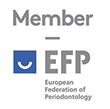Perio pod 3 - Combination of an hydraulic device and nanohydroxylapatite paste for minimally invasive transcrestal sinus floor elevation : procedure - 2 year results - endoscopic sinusal views. Didier Blase
D. Blase 1, R. Dricot 2, M. Arvram 3, M. Van Gestel 3, P. Lejuste 3 , J.F. Lasserre 4., S. Tomas 4
1. CEPOC SPRL, 6040 Jumet, BELGIUM
2. Messidor Dental and Implant Center, 1180 Brussels, BELGIUM
3. Grand Hôpital de Charleroi ( GHDC ) , 6000 Charleroi , BELGIUM
4. Université Catholique de Louvain, Periodontology, Avenue Hippocrate 10 , B-1200 Brussels, Belgium
Combination of an hydraulic device and nanohydroxylapatite paste for minimally invasive transcrestal sinus floor elevation : procedure - 2 year results - endoscopic sinusal views.
Purpose
The objectives of this presentation are to describe a transcrestal sinus floor elevation technique combining the use of an hydraulic device and a nanohydrxylapatite paste and to report on 2-year results.
Materials and methods
The sinus floor elevation procedure used a specially designed drill (Sinusjet®) to start hydraulic sinus-membrane unsticking and a nanohydrxylapatite paste (Osslift® ) for further sinus-membrane elevation and bone augmentation. It was perfomed as a 1-step procedure with immediate implant placement, or a 2-step procedure with delayed implant placement 9 months later. Implant survival rate, sinus-membrane perforation, post-operative complications, and the level of intraoperative and postoperative patient comfort using a visual analogue scale were analyzed retrospectively. In one patient, the whole procedure was registered using two endoscopes ( 30° - 4k sinus endoscope – Olympus) to get endoscopic sinusal and buccal recordings.
Results
120 sinus floor elevations were performed in 105 patients using Sinusjet ® and Osslift ® with a mean follow-up period of 2 years. In the 1-step procedure, the mean elevation was 8.1 +/-2.5 mm : 120 implants were placed. In the 2-step procedure, the mean elevation was 9.1 +/- 2.2 mm : 20 implants were placed. Sinus-membrane perforation was observed in less than 1% ( n = 1/120). 2 year implant survival rate was 99,3 % with 1 early implant loss (n=1/140). Those results were similar to those obtained in a previous retrospective study using Sinusjet ® and Ostim ® (136 sinus floor elevations – 202 implants - 110 patients) with a mean follow-up period of 4 years.
Conclusions
This minimal invasive transcrestal sinus floor elevation procedure that combines an hydraulic device and nanohydrxylapatite paste appears safe and predictable.
Keywords:
Dental implant, atrophic posterior maxilla, bone augmentation, sinus-floor elevation, transcrestal procedure, hydraulic device, nanocrystalline hydroxyapatite.
 Français
Français  Nederlands
Nederlands English
English
